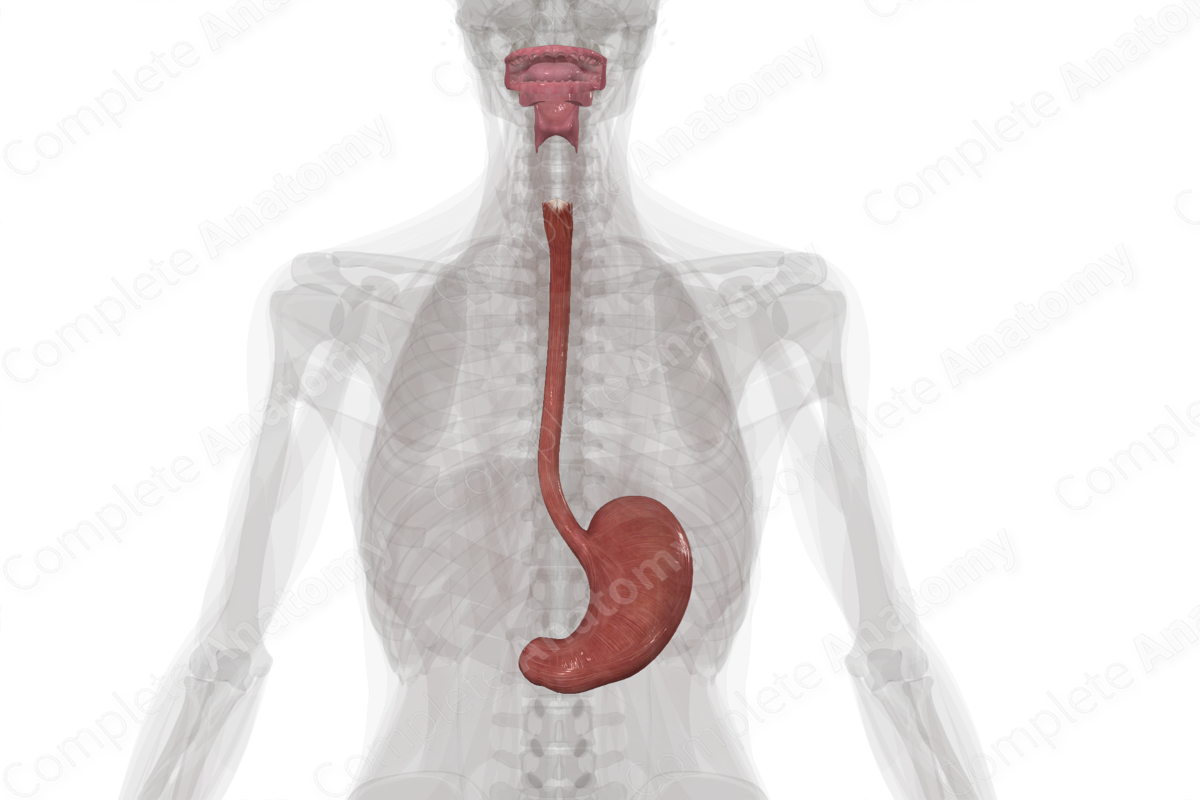
Upper Digestive Canal Description
The digestive canal can be divided into upper and lower regions. The upper digestive canal includes the mouth, esophagus, and stomach. The lower digestive canal is formed by the small intestine (duodenum, jejunum, and ileum) and large intestine (cecum, colon, rectum, and anus).
Along its entire course, the digestive canal has a distinct four layered tubal wall. From inside out they include the: mucosa, submucosa, muscularis, and serosa. Regional variations occur according to the development and function of each region.
Functionally, the upper digestive canal is responsible for the mechanical and chemical breakdown of food, readying it for absorption in the small intestines. Food is ingested through the oral cavity (mouth). Here it's acted on mechanically by the teeth, which breaks the food up for swallowing. Simultaneously, the salivary glands (parotid, submandibular, and sublingual), secrete chemicals into the oral cavity that breakdown and lubricate food.
The bolus of food is then swallowed and passed to the esophagus via the oropharynx and laryngopharynx (hypopharynx; pharyngoesophageal constriction). Waves of contraction of the esophageal wall propels the food bolus towards the stomach. The bolus enters the stomach at the gastroesophageal junction, aided by a “sphincter-like” constriction as it passes through the esophageal hiatus of the respiratory diaphragm. This is termed the inferior esophageal constriction.
Once in the stomach, the bolus is mixed with concentrated hydrochloric acid secreted by cells of the gastric epithelium. This acidic environment has several functions. These include killing ingested pathogens, initiation of peristalsis and signaling cascades, and the activation of enzymes that are also secreted by the stomach. The now, partially digested food, is known as chyme. From the stomach, chyme enters the lower gastrointestinal tract by passing across the pyloric sphincter muscle into the duodenum of the small intestine. Here, it undergoes further digestion.
Related parts of the anatomy
Learn more about this topic from other Elsevier products
Upper Gastrointestinal Tract

Vomiting is the forceful ejection of upper gastrointestinal (GI) tract contents and may occur as a result of gastric, intestinal, or systemic disease.




